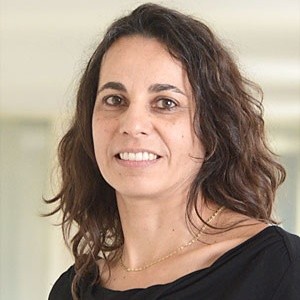Much has been said about the sudden transition to remote teaching at all levels of education, a disruption that demanded of classrooms to be instantaneously moved to homes and teaching to be delivered via unfamiliar technology and uncertainty. With the ensuing intensity of the progressing semester and the examination period, there was little time for reflection.
Now, as the preparations for the Fall semester are underway, it is time for stock taking. What was challenging and where is there room for improvement? But also, what worked well and how was educational quality sustained? In considering these latter questions from the perspective of EHL’s Bachelor program in International Hospitality Management, three elements stand out: presence, collaboration and dedication.
Presence
Studies on online teaching have shown that a successful learning experience is created when teachers are able to foster a learning environment in which knowledge and understanding is constructed collaboratively through interactions. Specifically, Garrison, Anderson and Archer (2000), when examining how meaningful learning is facilitated in remote teaching contexts, developed the Community of Inquiry Framework that is composed of the three interrelated types of presence: teaching presence, cognitive presence and social presence.
While cognitive presence refers to constructing and confirming meaning by basing activities and discussions on four steps – trigger, explore, integrate and resolve –, social presence addresses the capacity to create group cohesion by offering opportunities for effective, personal and relational expressions. Teaching presence, finally, describes the conscious designing, organizing and managing of online teaching in alignment with learning outcomes and by actively guiding instruction through clarity, continuous feedback and reinforcing student contributions.
Each type of presence covers an essential aspect of how content, discourse and climate in online classrooms are purposefully brought together to form the basis of a successful learning community that diminishes content fragmentation and disconnectedness. What is significant during “regular” remote teaching, becomes highly pronounced during emergency remote teaching.
At EHL, students’ comments in the nominations for the best remote teaching award, demonstrate well how teachers consistently applied these three forms of presence. For example, students expressed a high appreciation for faculty whose positive attitude, kindness, humor and constant availability created a reassuring atmosphere that encouraged them to learn in spite of the challenging circumstances (social presence).
Great value was given to courses that were efficiently organized, provided regular feedback, offered a synchronously and asynchronously interactive learning environment based on activities and opportunities for varied forms of engagement. All this while maintaining clear expectations and an alignment with the course learning outcomes (teaching and cognitive presence). Taken together, EHL teachers’ intuitive application of these forms of presence demonstrated an explicit commitment to student success.
Collaboration
As teachers stand at the forefront of designing and delivering meaningful educational experiences – their expertise, energy and continuous focus creating lasting impressions on their students – offering educational quality is a collective endeavor. Many groups with varying “off-stage” responsibilities collaboratively laid the infrastructures for and provided ongoing support to teachers and students while simultaneously getting used to working in an online environment and under extenuating circumstances.
As EHL’s program offerings were rapidly adapted for remote delivery without preparation, it is not only the tremendous collective efforts that stand out, but also the collective learning that occurred. COVID-19 served as a catalyst for implementing and continuously developing flexible environments, while maintaining the core structures and values for delivering quality.
As an organization that values innovation, entrepreneurial thinking and responsible actions, EHL excelled in demonstrating collective excellence in responding swiftly and with consistent agility to an evolving situation with an unknown outcome.
Dedication
Dedication might – in a first instance – sound a bit old-fashioned. Possibly other terms are preferred, such as ongoing commitment. However, as the age-old adage “it takes village to raise a child” expresses: providing quality education is based on the essence of collaboration, but also, on purposeful and focused dedication, that is hard-work and passion sustained over time.
As management, faculty and staff at EHL came together to create and maintain a learning environment in significantly changed conditions without losing sight of the expected outcomes, the dedication to do so with attention to being as supportive and reassuring as possible is an additional hallmark of educational excellence.
Teaching is an intentional and planned activity, on all levels, whether the provision and implementation of a curriculum, the logistical and technical support of planning and IT departments, or a teacher’s design and delivery of a lesson. As health and economic priorities needed to be carefully weighed against each other, the physical and mental safety of students and employees stood at the forefront of all considerations. At the same time, the enduring dedication to make things work paired with maintaining a positive climate allowed for set goals to be reached. And more. To all involved, students included, it created a collective learning community with passion, resilience, innovation and a growth mindset at its core.
Bibliography
Garrison, D. R., Anderson, T. & Archer, W. (2000). Critical Inquiry in a Text-Based Environment: Computer Conferencing in Higher Education. The Internet and Higher Education 2(2-3): 87-105.
Weissman, N. (2017). Evaluating the Effectiveness of a Synchronous Online Environment in Establishing Social, Cognitive, and Teaching Presence.(Electronic Thesis or Dissertation). Retrieved from https://etd.ohiolink.edu/





